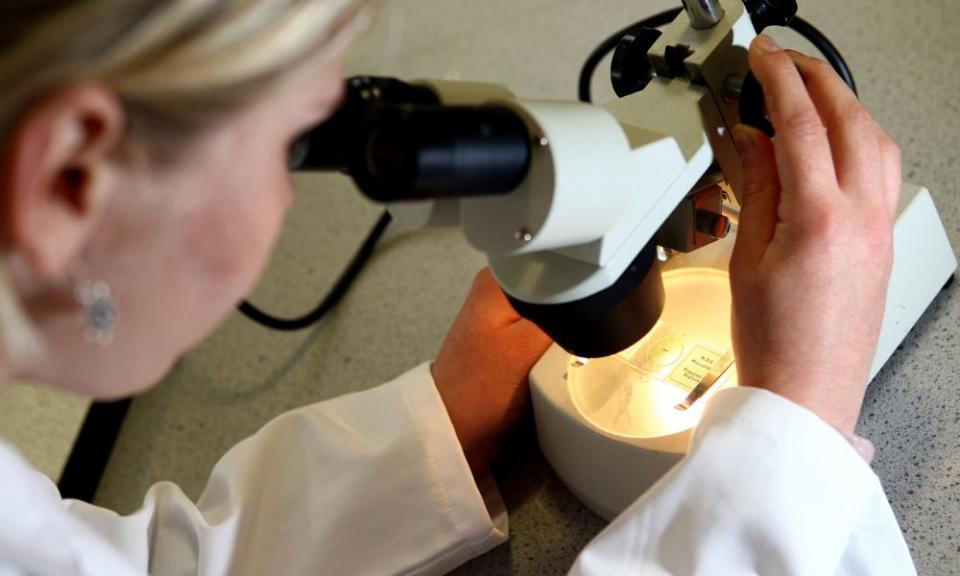Plant toxin hailed as ‘new weapon’ in antibiotic war against bacteria

Scientists have discovered a plant toxin whose unique method of dispatching bacteria could be used to create a powerful new range of antibiotics. The prospect of developing new antibacterial drugs this way has been hailed by doctors, who have been warning for many years that the steady rise of multidrug-resistant pathogens such as E coli now presents a dangerous threat to healthcare across the planet.
The new antibiotic – albicidin – attacks bacteria in a completely different way to existing drugs, a group of British, German and Polish scientists have revealed in a paper recently published in the journal Nature Catalysis. This suggests a new route could be exploited to tackle bacterial disease, they say.
“We could not elicit any resistance towards albicidin in the laboratory,” said Dmitry Ghilarov, whose research group is based at the John Innes Centre in Norwich. “That is why we are really excited – because we think it will be very hard for bacteria to evolve resistance against albicidin-derived antibiotics.”
Albicidin is produced by a bacterial plant pathogen called Xanthomonas albilineans that triggers a devastating disease, known as leaf scald, in sugarcane. The pathogen uses albicidin to attack the plant, but it was also found, several decades ago, that it was highly effective at killing bacteria.
“The problem was that, at the time, we did not know exactly how albicidin attacked bacteria and so we could not use it as the basis of new antibiotics because these might have triggered all sorts of complications in the human body,” said Ghilarov. “We had to determine precisely how it killed bacteria before we could do that – and that is what we have now achieved.”
Working with scientists at the Technische Universität Berlin in Germany and at Jagiellonian University in Kraków, Poland, Ghilarov and his team used a series of advanced techniques to reveal how albicidin kills.
“Now we have a structural understanding, we can create modifications of albicidin to improve its efficacy and pharmacological properties,” said Ghilarov. “We believe this is one of the most exciting new antibiotic candidates in many years. It has extremely high effectiveness in small concentrations and is highly potent against pathogenic bacteria – even those resistant to the widely used antibiotics such as fluoroquinolones.”
The World Health Organization has warned that antibiotic resistance has become one of the biggest threats to global health, food security and development. The indiscriminate overuse of antibiotics has caused bacteria to develop resistance to them, resulting in the evolution of some strains of microbes that have become much harder to eliminate, which in turn has led to higher medical costs, prolonged hospital stays and increased mortality.
One recent study suggested that this problem is now killing about 3,500 people every day, with more than 1.2 million dying in 2019 as a direct result of antibiotic-resistant bacterial infections.
“One problem is that there is simply not enough research and development into new antibiotics by pharmaceutical companies,” said Prof Tony Maxwell, who is also based at the John Innes Centre. “New compounds used to come on the market all the time but that is no longer the case. Fewer and fewer big pharma companies are working on antibiotics and so fewer and fewer are being approved by western drug authorities. The problem is that you don’t make money out of antibiotics any more.
Related: GM bacteria could combat antibiotic resistance, study suggests
“On the other hand, there is nothing better for treating a bacterial disease than an antibiotic, so this work, which opens up a whole new range of drugs based on our new understanding of how albicidin works, has got to be good news. It may take years to create clinically effective versions but it does suggest we may have a new weapon in our armoury one day.”
This point was backed by Ghilarov. “To get things moving, the government needs to step in, as it did with vaccine development. It needs to provide incentives or set up a dedicated antibiotic development institute.”

 Yahoo Movies
Yahoo Movies 